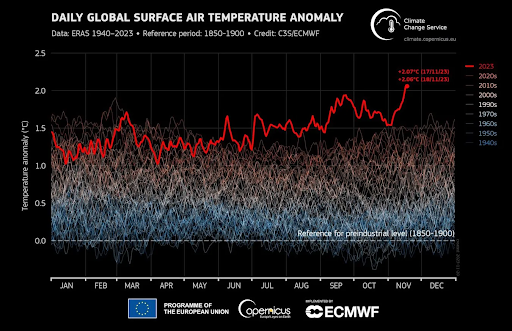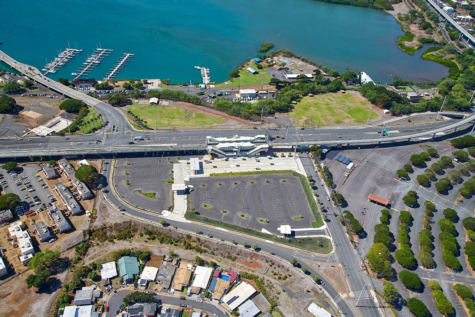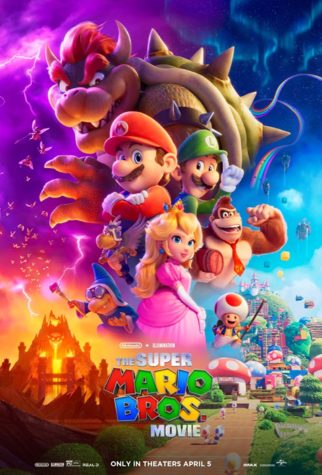Marine Debris Harms Living
Freshmen Bridget Estabillo, Sarah Mack, Serafina Cid-Ross, Arianna Medina, and Cameron Hindel collect trash at Kalaeloa Beach.
December 16, 2018
An exponential abundance of garbage wallows in the world’s oceans and the problem continues to expand as humans carelessly litter. It seems like this is all over the news, but if nobody wakes up and faces the reality, our planet’s beautiful oceans will cease to exist.
We need to stop using plastic, or at least drastically decrease our use. According to Ocean Conservancy, plastic production is expected to double over the next ten years, which means doubling the 8 million metric tons dumped in the ocean every year. Something as little as a straw has the potential of ending up in the ocean and hurting the ocean animals, or even humans.
Every bit of trash swept into the ocean, no matter how small the quantity may be, is swept by the current and eventually lured into one of the five ocean regions. It is estimated that 1.15 to 2.41 million tons of plastic are entering the ocean each year from rivers. In fact, there is a giant mass of garbage whirling throughout the Pacific Ocean, commonly referred to as the Great Pacific Garbage Patch, which is estimated to be over twice the size of Texas.
The Pacific Ocean is massive and is the world’s largest and deepest ocean, reaching the shores of stunning beaches that attract those from all around the world. The Hawaiian islands’ coastlines have always been adored for their natural beauty, but the heavy mass of garbage collected lies halfway between Hawaii and California now. Hawaii residents may see the expanding effects of plastic and pollution soon, as the Big Island’s southeastern shore is relatively close to the Great Pacific Garbage Patch.
People don’t seem to focus on the ecological impact of pollution. The true effects of harming our planet won’t settle in until long after we are gone. But let’s think about its effect on living things.
Garbage in the sea is often ingested by seabirds, turtles, marine mammals, and fish, as they mistake the plastic or other floating trash for food. Waste can choke, strangle, or block animals’ digestive systems. According to Ocean Trash Index, more than 260 species are known to have ingested or been entangled by plastic debris.
Not only are there harmful effects on sea life, but humans. When people eat seafood, they are ingesting all the waste that they put into the ocean in the first place. Ingestion of plastic trash and the consequent uptake of toxins adsorbed on its surface can transfer harmful chemicals through the food web into species eaten by humans; these can include molecules known to increase the risk of birth defects and cancer.
Careless or unlawful disposal of syringes and other medical waste products can spread diseases and pose risks to beach-goers. It is utterly disgusting and careless to continue to litter knowing what is happening to our planet and the life on it.








